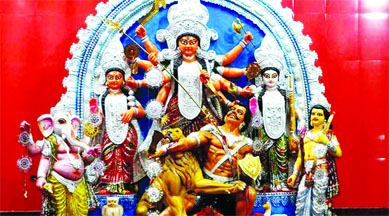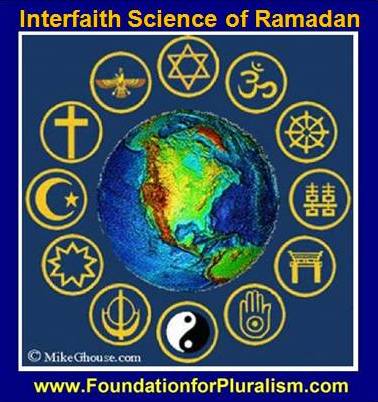
Durga Puja, one of the most revered festivals in Hinduism, celebrates the triumph of Goddess Durga over the buffalo demon Mahishasura. In 2024, this vibrant five-day celebration, known as Durgotsava, will start from October 8. Beyond its religious significance, Durga Puja serves as a cultural and spiritual gathering for millions of devotees, particularly in India, symbolising the victory of good over evil.
While Sharadiya Navratri is celebrated with great enthusiasm across India, it holds a unique charm in Gujarat and Bengal. In Bengal, the Durga Puja festival is celebrated in full swing.
This year, Durga Puja will start on October 8, 2024, and will conclude on October 12 with Vijayadashami. Durga Puja is the biggest and most important festival for the Bengali community. Each day of the festival, including Shashthi, Mahasaptami, Mahaashtami, Mahanavami, and Vijayadashami, holds special significance. Durga Puja lasts for five days, from the Shashthi (sixth day) to Dashami (tenth day) of Sharadiya Navratri.
Significance Of Each Day Of Durga Puja
Bilva Nimantran (October 8, 2024):
Bilva Nimantran Timing: 3:39 PM – 5:59 PM
On this day, Goddess Durga is invited to reside in the Bilva tree or kalash (pitcher). This ritual of inviting Goddess Durga is known as the Nimantran. The evening time and the conjunction of Shashthi are considered the most suitable for Bilva puja.
Kalparambh (October 9, 2024):
According to scriptures, on the day of Kalparambh, Goddess Durga, along with Maa Saraswati and Goddess Lakshmi, descends to Earth alongside Kartikeya and Ganesh Ji. The Kalparambh puja is performed at an auspicious morning time. In Bengal, the curtain is drawn from the idol of Maa Durga on this day. The rituals of Kalparambh are similar to the Bilva Nimantran observed in other states.
Navapatrika Puja (October 10, 2024):
Navapatrika Day: 5:05 AM
The day of Navapatrika Puja is also known as Mahasaptami. On this day, Goddess Durga is invited to a group of nine plants known as Navapatrika. The Goddess is also given a grand bath on this day.
Sindoor Khela (October 12, 2024):
This day marks the last day of Durga Puja. On this day, married women offer red vermilion (sindoor) to the Mother and apply it to one another. It is believed that this ritual grants the blessing of everlasting marital bliss.
Why is Durga Puja Celebrated: Origin,
Significance, and Traditions
The origins of Durga Puja can be traced back to ancient Indian scriptures. According to mythology, Mahishasura was a demon who had received a boon from Lord Brahma that he could not be defeated by any god or man. This made him powerful, and he caused great distress to the gods in heaven. In response to the gods’ plea for help, Lord Brahma, along with Lord Vishnu and Lord Shiva, created Goddess Durga, endowing her with their supreme powers to battle Mahishasura.
A fierce battle ensued between Mahishasura and Goddess Durga. To gain an advantage, the demon transformed himself into a buffalo. The conflict lasted for 10 days, at the end of which Goddess Durga emerged victorious by beheading the buffalo and defeating Mahishasura as he appeared in his original form.
In essence, the festival of Durga Puja commemorates this epic battle, spanning over 10 days, with the final day known as Vijayadashami celebrating the triumph of good over evil, in addition to celebrating Goddess Durga’s visit to her parental home with her children.
The celebrations kick off with Mahalaya, marking the beginning of Goddess Durga’s journey to Earth. The formal festivities start on “Maha Sashthi,” the sixth day, highlighted by the grand unveiling of Durga’s idol to the public amid the vibrant beats of “dhakis” playing the traditional “dhak” drum, a staple of the puja and Bengali tradition.
The next day, “Maha Saptami,” begins with the early morning ritual of immersing a banana tree in water, symbolically transforming it into the “Kola Bou” (Banana Bride), dressed in a saree with a red border and placed beside Lord Ganesha. The “Kola Bou” is interpreted by some as Ganesha’s bride, while others see it as a representation of Goddess Durga herself or a sacred assembly of nine plants embodying the goddess’s plant form.
“Maha Ashtami,” the eighth day, is crucial as it commemorates Durga’s triumph over Mahishasura. This day is filled with devotees offering prayers with “Anjali” and enjoying festive meals like khichdi. The following day, “Maha Navami,” commences after the “Sandhi Puja,” culminating in the grand “Maha Aarti,” drawing large crowds for participation.
The festivities conclude on “Maha Dashami,” the tenth day, with the immersion of Durga and other deities’ idols in the river Ganges, a ceremony known as “Visarjan.” Before this immersion, married women partake in “Sindoor Khela,” applying vermilion to each other’s faces. The day wraps up with processions and joy, and the tradition of visiting relatives to exchange “Bijoya Dashami” greetings signals the end of Durga Puja.





Be the first to comment